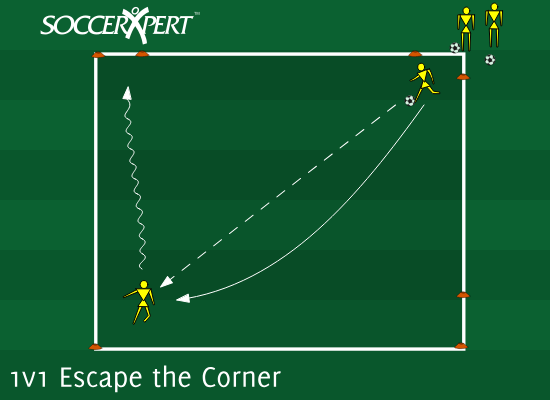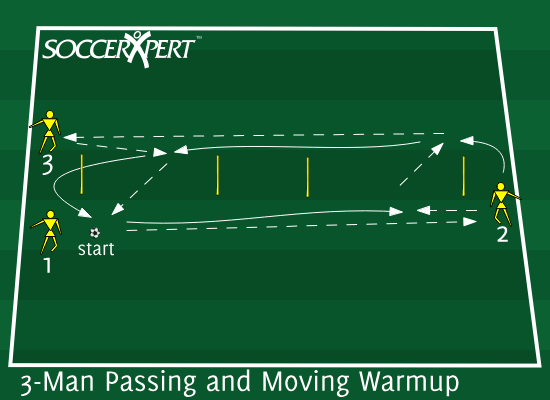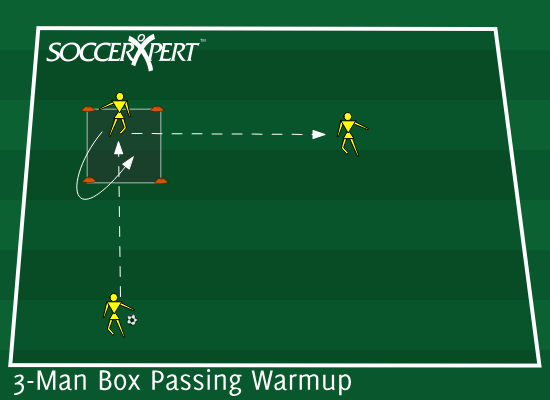Under 9 Soccer Drills, Games, and Exercises
Quality age-appropriate soccer drills for kids in the U9, Under 9, 9 and Under age group.
Under 9 Soccer Drills, Games, and Exercises
Soccer drills for kids ages 9 and under emphasize skill development and game awareness through fun and engaging activities. This page offers drills designed to improve ball control, passing accuracy, and teamwork in a supportive learning environment.
UNDER 9 SOCCER DRILLS, GAMES, AND EXERCISES
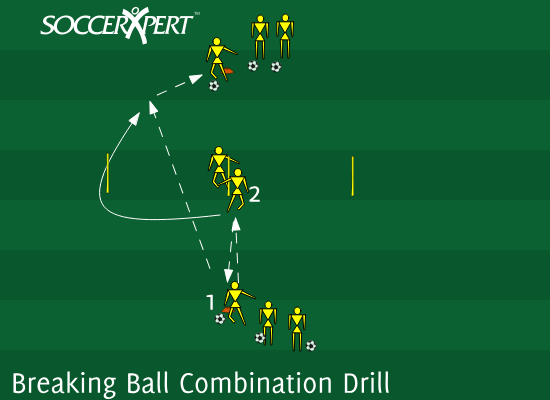
Breaking Ball Combination Drill
This drill teaches players how to play accurate breaking balls into space and make well-timed runs to receive them. Players will work on combination play through quick 1-2 passes, then focus on the weight and timing of through balls. The receiving player learns when to make their run and how to time it with the pass. This drill builds the connection between passer and runner that's crucial in breaking down defenses during games.

3v1 Rondo
This drill builds the foundation of possession soccer by teaching players how to keep the ball in tight spaces. Players learn to create good angles of support, move intelligently without the ball, and position their bodies correctly when receiving. The small grid forces quick decisions and sharp passing. Attackers practice opening their hips to see the whole field and using their back foot to receive passes smoothly. The drill teaches deception through body feints and eye contact that mislead the defender. Players develop the speed and accuracy needed to move the ball before pressure arrives. The consequence of becoming the defender when you make a mistake keeps everyone focused and accountable. This simple but effective drill appears in training sessions from youth levels all the way up to professional teams.
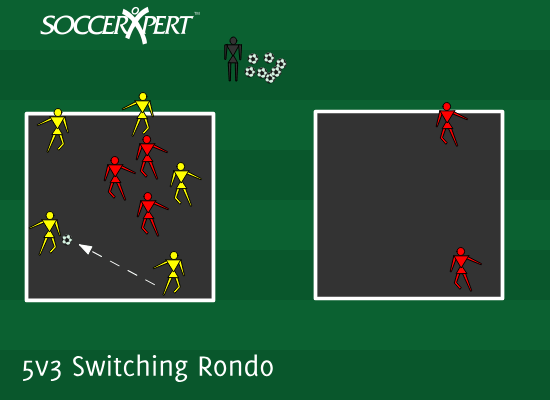
5v3 Switching Rondo
This drill trains players to recognize when possession is lost and react instantly by switching fields of play. The attacking team learns to keep the ball under pressure in tight spaces while the defending team works on winning possession and immediately playing forward. The switching element teaches players to read the game and anticipate transitions. Players must communicate who stays and who goes when the switch happens, building decision making skills under pressure. The numerical advantage for attackers creates confidence in possession while defenders learn to press intelligently when outnumbered. Moving between grids forces players to stay mentally engaged even when they're not directly involved in the current action. This back and forth rhythm mirrors real games where play shifts from one area of the field to another.
